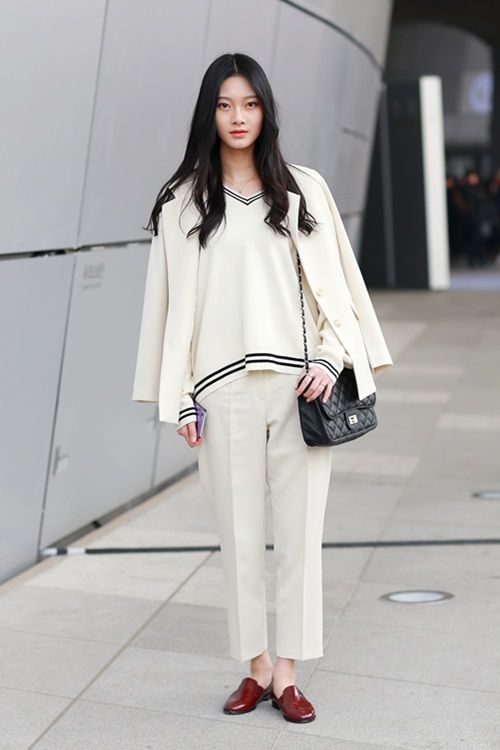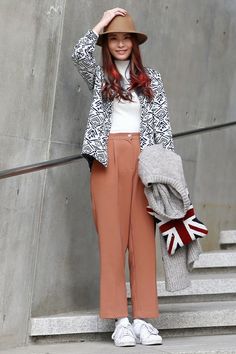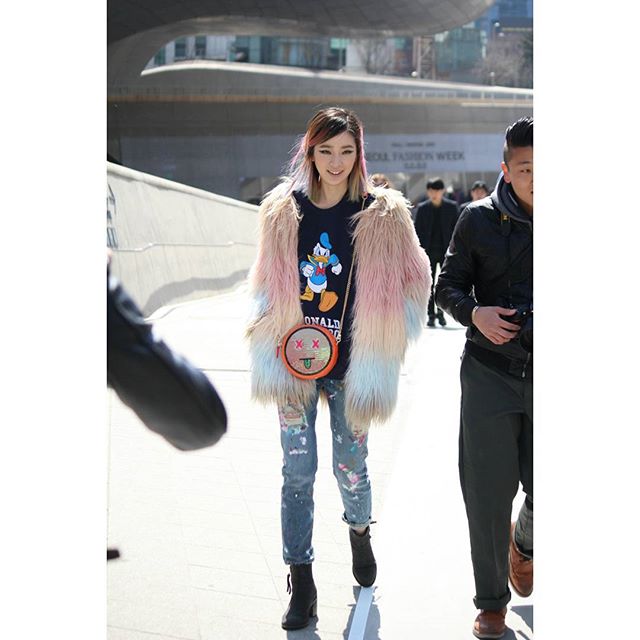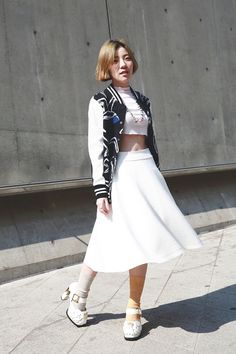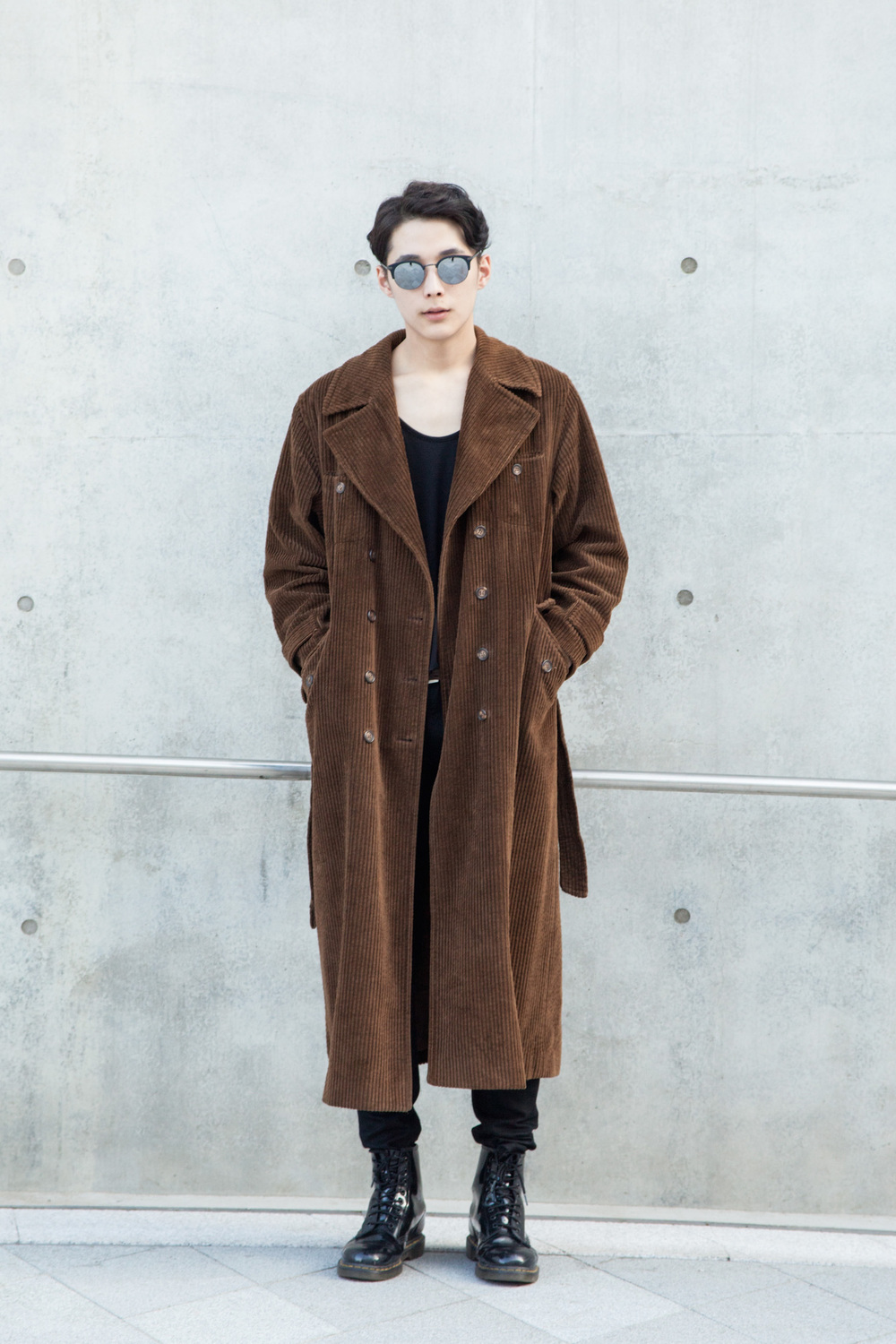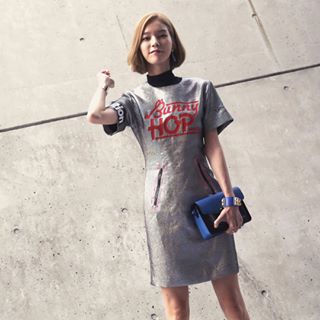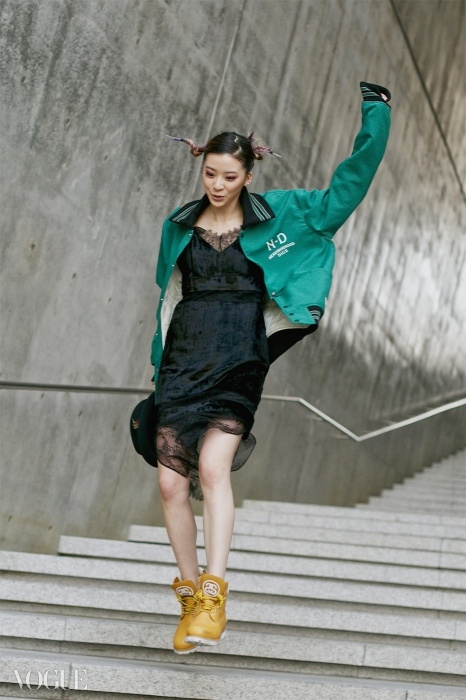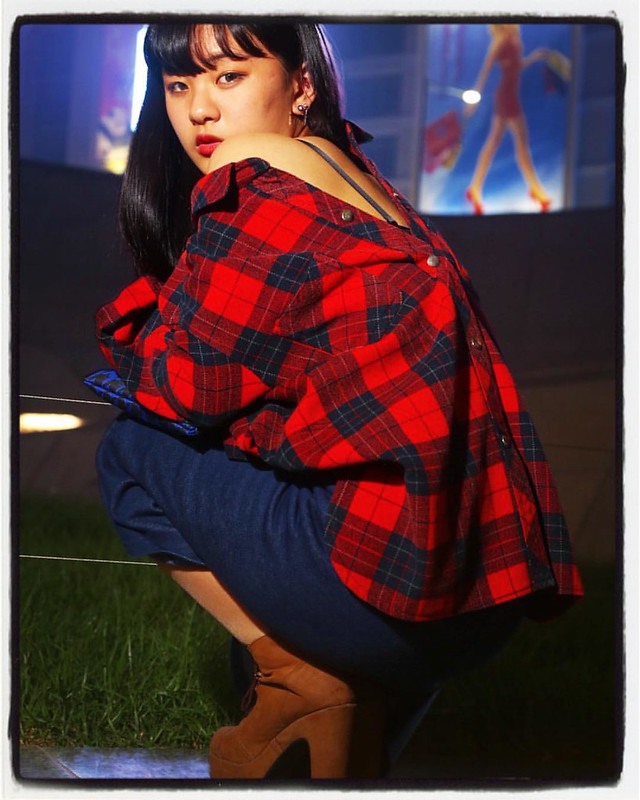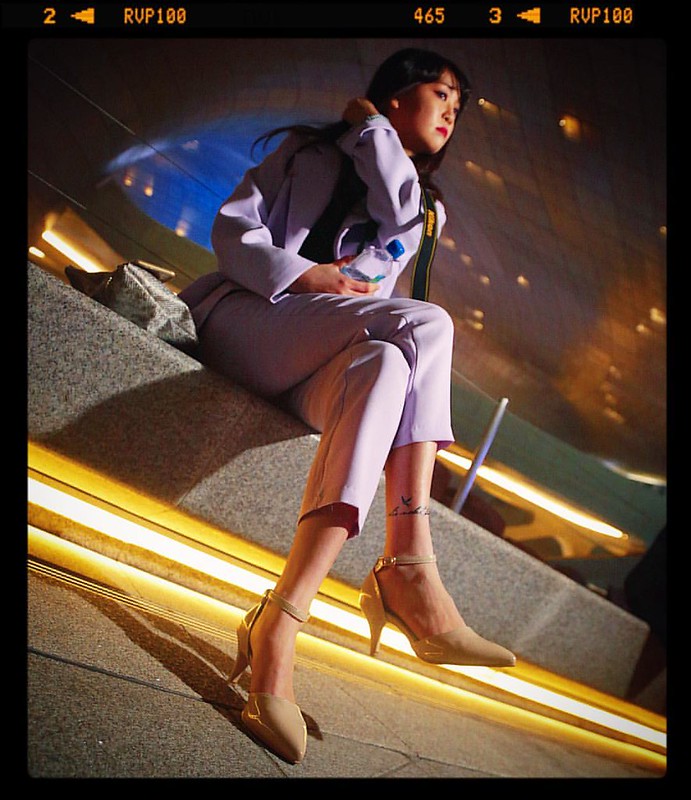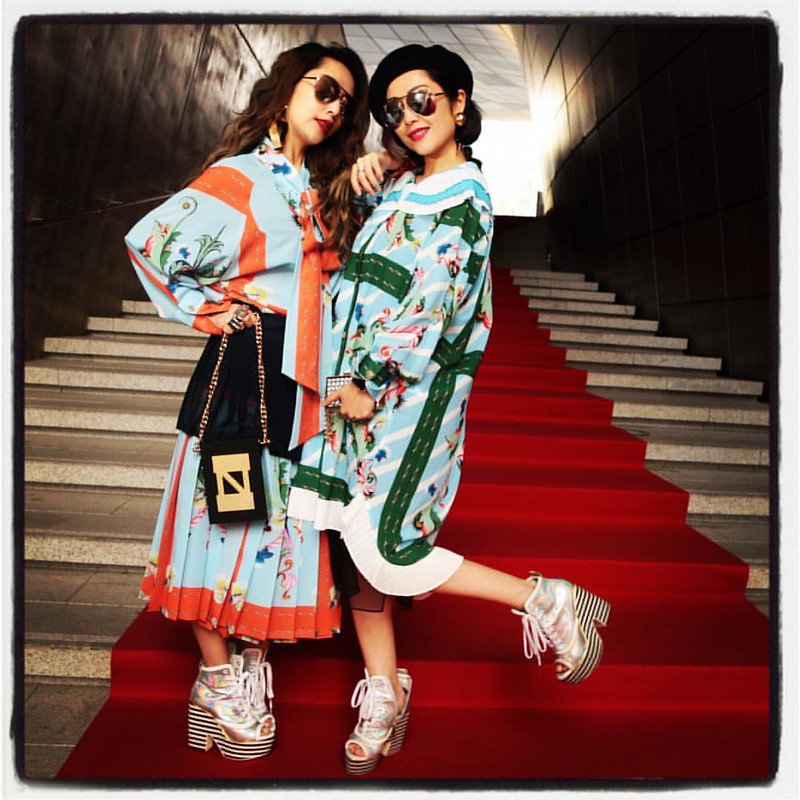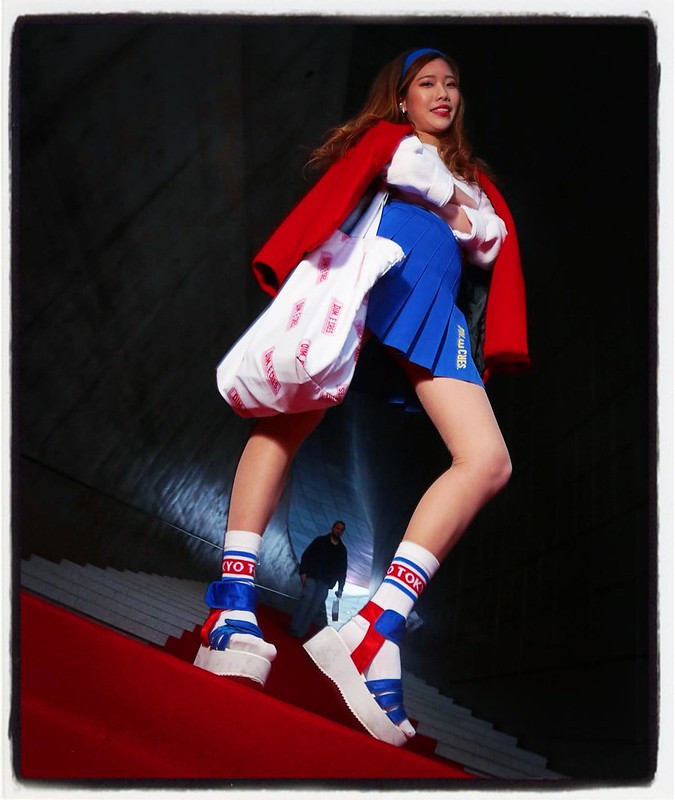An Alien, Parametric Space
Before 2012, the creation and construction of the DDP complex was heavily (and correctly) criticized as a project as motivated purely out of the desire to construct an object of Dubordian Spectacle. (Yun) However, the proof in the theorital pudding that was the DDP megastructure project, as the prototype and proving ground for Zaha Hadid's heavily theoretical and aspirational new conception of "Parametricism 2.0" (Schumacher), would be found in the burgeoning street fashion culture that was the result of several aspects of Seoul's unique infrastructural and cultural backdrop. Firstly, the burgeoning street fashion culture was clustered (and limited by) the rigidity of a Seoul Fashion Week event that was housed mostly at SETEC and other places, when the so-called paepi could barely find form as a nigh-subculture. The paepi, while SFW was at SETEC, were literal outsiders to the formal fashion field. But when SFW became permanently housed at DDP, the "multi-modality" (Schumacher) enabled by its Parametricist features allowed the nascent paepi subculture to explode like gasoline thrown onto an open flame when the DDP opened in 2012. When analyzed against the fact of Seoul's already extant "flexible sociality" (Cho), the DDP ended up being a perfect fit with the city of Seoul and its urban(e) cultures, especially as it became both a spatial link to and staging ground for the cultural manifestations of the industrial infrastructures of the Dongdaemun textile complex. The flowering of the paepi is only the first success case and example, and only the initial fruit of the fortuitous convergence of Seoul's inherent flexible sociality and the multi-modality of the space inside, outside, within, and around the DDP. (277 words)
KEYWORDS: DDP, paepi, street fashion, Dongdaemun, flexible sociality, Parametricism, Seoul Fashion Week
By Eugene Lim [CC BY 2.0 (http://creativecommons.org/licenses/by/2.0)], via Wikimedia Commons
First Things First
I was the first "street fashion" photographer in Korea, with a body of work of clothing-oriented ethnographic portraiture that stretches back to 2006, shooting Seoul Fashion Week "paepi" (패션 피플) since late 2007. So, I've been doing ethnographic research on the paepi for more than a decade and was already documenting them when their culture exploded with the opening of the DDP in 2012. Before that, their socio-sartorial energy was relegated to the periphery of the fashion field, and literally and figuratively speaking, to the parking lot of the socio-spatial map of the fashion field as symbolised during important events such as Seoul Fashion Week.
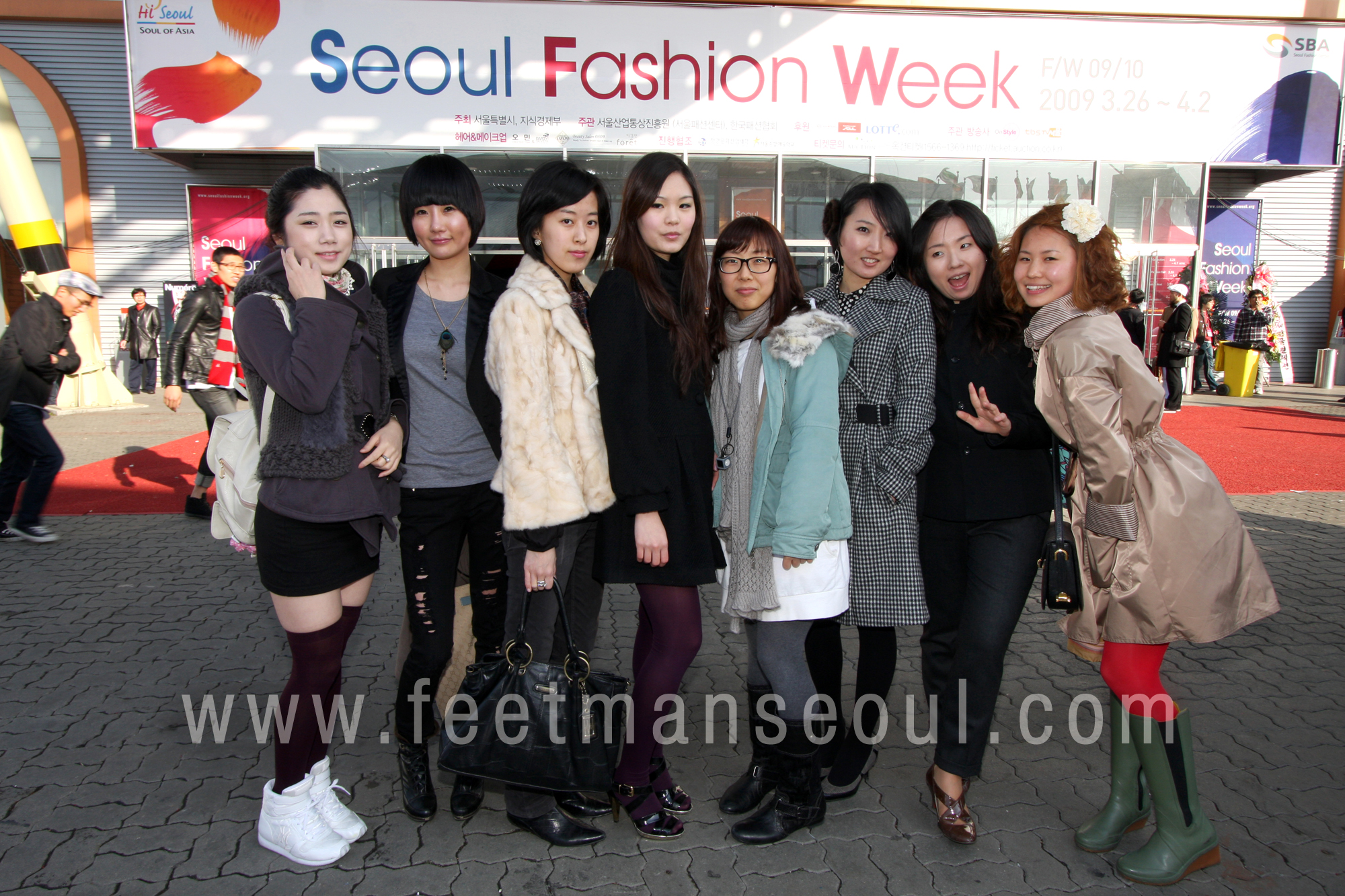

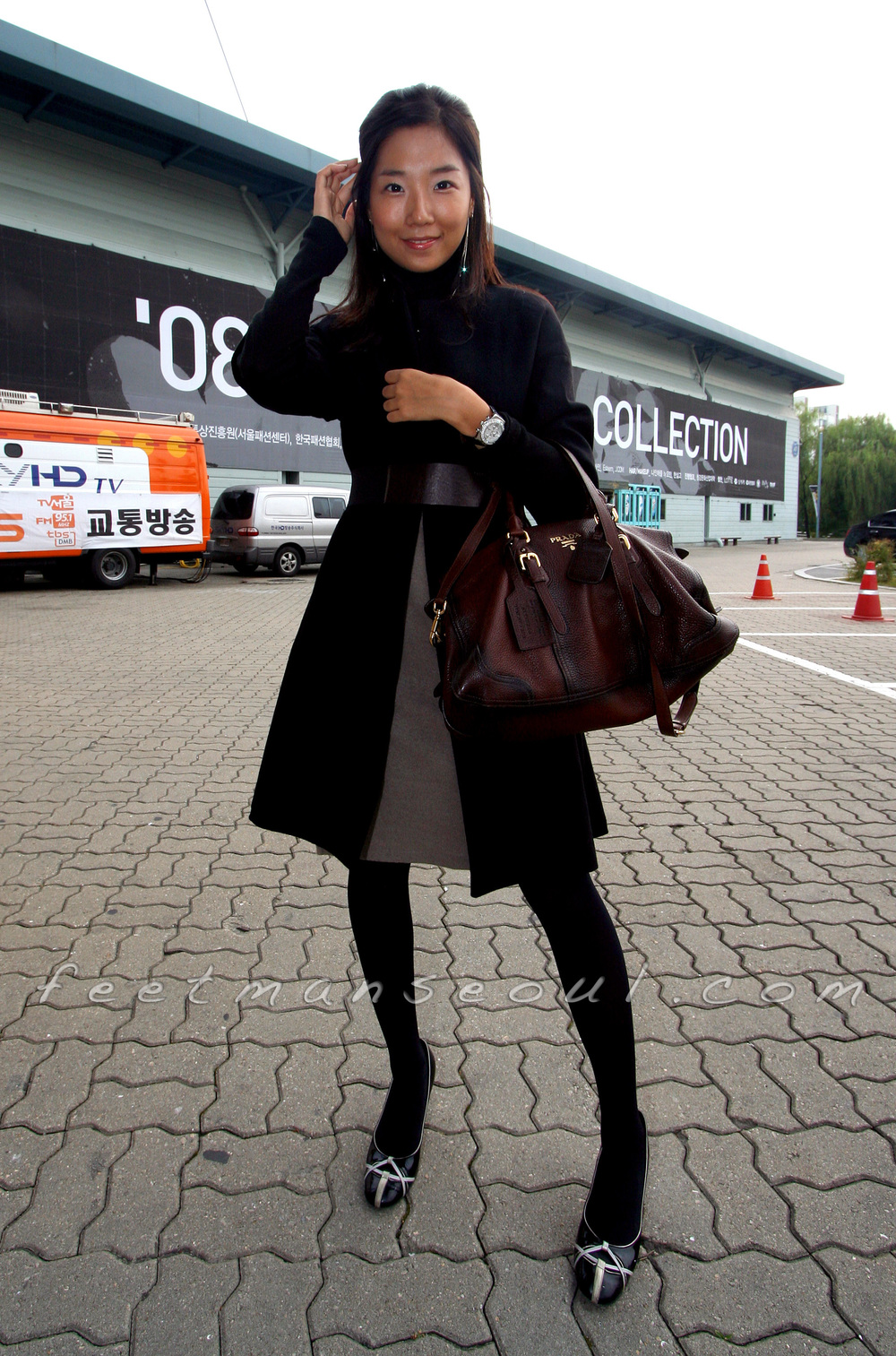
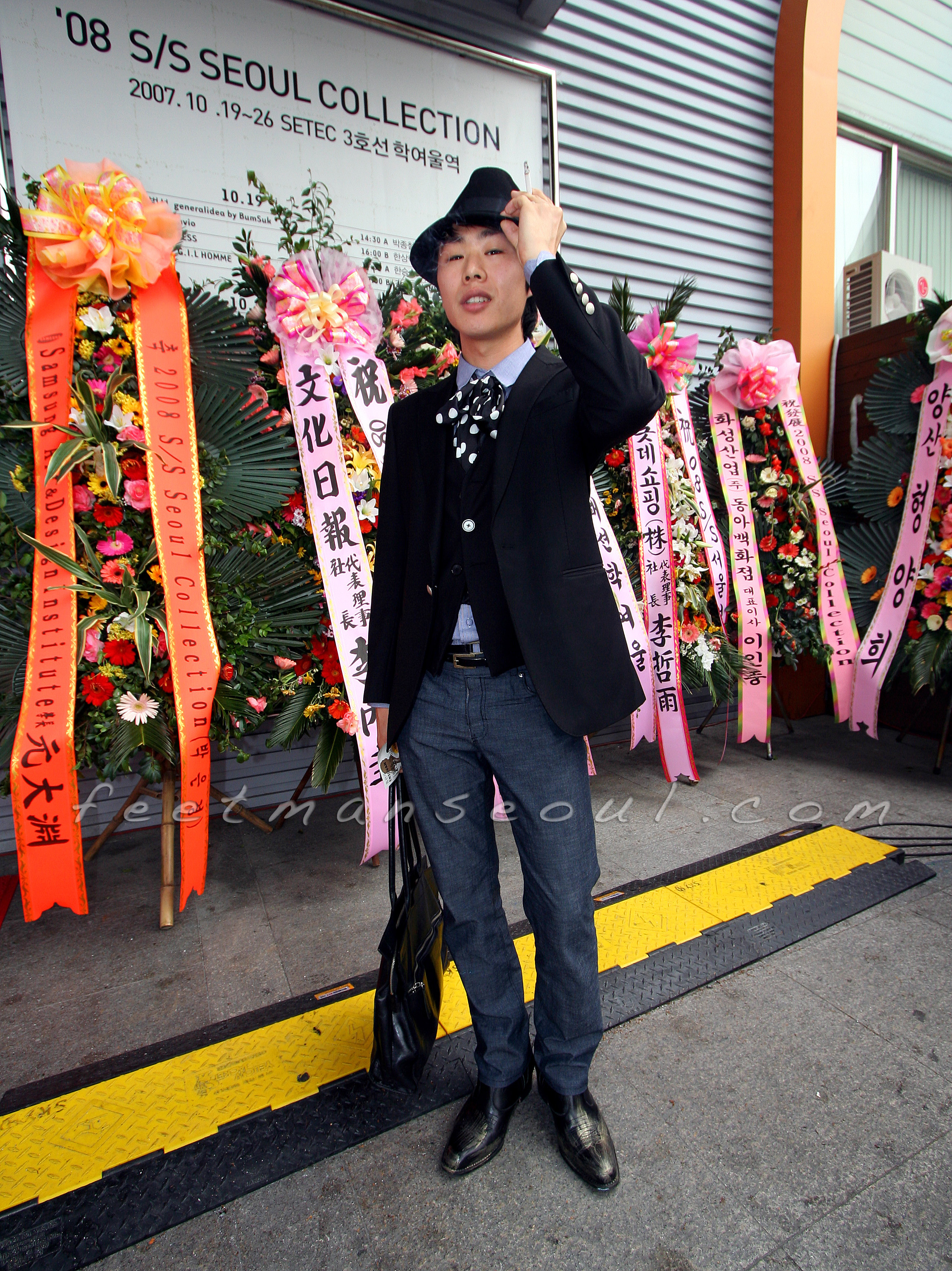
Background of the Paper
During my class on Hallyu Marketing, I had asked the question of how the Dongdaemun Design Plaza building itself worked to define a particular, peculiar kind of social space for the street fashion scene during Seoul Fashion Week. And it occcured to me that one factor in the explosion of the street fashion scene at DDP after it opened in 2012 was the way the nature of the structure itself set the tone for a new kind of social/sartorial culture, bounded spatially by the “alien” structure of the "spaceship" and temporally by the SFW event itself. In short, the conditions of the fashion field shifted, as the DDP helped the paepi rewrite their position on the map of the fashion field even as the paepi changed the very meaning and relative position/power of the main players in that field – high fashion designers and their runway shows – and it is my contention that the relative positions of those formerly at the top and bottom of the field in terms of position and power, high fashion designers on the deep inside and the paepi street fashion “kids” at the periphery, has switched completely. The paepi, helped by the alien spatiality of the DDP, have flipped the field.
Much ado has been made about the "alienness" of the DDP structure. From "Embracing the Alien Spaceship" in the Korea Herald to the same spacey sentiment being echoed by CNN Travel and The Korea Times, and even received a (literal) sendup video put together by what appears to be some Arirang TV folks in their spare time.
In short, the association with aliens was clear and immediate, and initially set off alarm bells around a long, publicly funded project that had been fraught with construction issues, clashing political agendas among myriad actors, and the jarring, sheer alienness of a structure that was a monument to Parametricism and quite likely a milestone in the future of architecture and human relationships to the built environment, but in that very way, was just plain strange. But it is that very strangeness of the building that I'd like to explore here, as my observations of the street fashion culture at Seoul Fashion Week since it opened the building in 2012 have indicated that the strangeness of the building is what imbued the space it physically defines with a different, broader range of social options and actions that was very un-Korean and enabled a certain kind of social and sartorial freedom to thrive – a place where Seoul’s “flexible sociality” was amplified by the building’s “multi-modal” design imperative. The "spaceship” is surrounded and filled with a "force field" of social and sartorial openness with a power generated by the twice yearly Seoul fashion Week event. The SFW event permanently held twice a year at the DDP defines a unique place in social spacetime in which all bets and restrictive social norms are off, and provide a social cover under which the social "freaks" do indeed feel free to "come out", to use the words of the old Whodini standard.
Check.
The flowering of the practice of street fashion photography at DDP is elegant "proof" of the intended concepts behind the building's construction.
Developing the Aesthetic of Seoul's Hyperreality
As a photographer, I had the goal of creating a lookbook (done in tandem with Korea Fashion News/섬유신문) that 1) addresses the nature of DDP during SFW as an un-Korean space for social aliens, and 2) provides an aesthetic match for the documentation of DDP during SFW as a space of Hyperreality, and 3) offers an aesthetic and stylistic consistency between the pictures in the collection as a lookbook.
The beginning of a lookbook for Seoul Street Fashion Week that captures the textually hybrid and heavily remixed look of Seoul's hypermodern paepi.
This hypermodern aesthetic is characterized by:
Heavily mediated reality. Instagram filters, frames, everything. All aspects of the images' initial mediation -- from filters and frames and exposure fixes -- are included as a part of the final image. It's as important as the initial moment of imagemaking itself.
Spatial and social layering. The images should ideally match the idea of showing the subject in relation to "a space of simultaneity" in which layers of space and spaces of social action are visible, in the way that the unique conception and construction of the building encourage flow, and the use of the spaces that have no delineated end or beginning, inside or outside, in which "each space is made unique and memorable in its articulation, albeit without fragmenting the overall aesthetic" Photographically, this means a sense of layers and separations between elements and actors, yet they are unified within the frame, without a feeling of discrete separation between them, in the way the building structure allows for the unique kind of relationship and type of social interaction the building was designed to engender.
Surreal affect. A "flashy," commercial, unreal look.
Close-up, direct portraiture. The eyeline of the subject goes directly into the lens and the gazer. It's a direct, intimate connection that anchors what is obviously the central element and offers a point of direct communication with the viewer.
Two Prongs of Investigation
Documenting an extant culture of Hyperreality with the proper tools, along with written theory, as an academic paper utilizing standard academic tools such as recorded audio interviews.
An expression of Hyperreality through heavily mediated, aesthetically enhanced Visuals as a commercially viable Lookbook.
Dual sets of spatial and social layers are brought together in this image, in which an open sky stands in sharp contrast to multiple foregrounds composed of concete and steel. The exposure itself utilizes an indoor studio flash unit outdoors and exposes almost to the point of whiteout, but underexposes the sky to accentuate the stormy weather that was indeed fast developing. The social layering of the young, colorful, bright, and shiny Korean youth popped out against a seemingly older, more conservative woman of the Islamic faith looking upon the subject with a mix of surprise and slight disdain is also interesting, and also includes a binary opposition of the subject engaged in an intimate, one-on-one photographic interaction in a public place, against a line of passersby. All the while giving the Janet Lynn/Japanese "V"-sign of extreme optimism while wearing a lavender, ladylike choker/bowtie atop a Madonna-originated "Like a Virgin" meme witten in gaudy, jarringly jagged script that seems to go against the mood of the gesture and its bearer.
As a structure designedas the pinnacle of Parametricism, a design principle thatcan function as "an interface for multi-modal communication" and integrates interior and exterior, inside and outside, natural and synthetic, land and sky, green and city space, and even light vs. dark, this is one of the only places in the city where one can shoot with these binaries all displayed in their stark oppositions within a single frame, especially as this is framed by the structure itself, which is designed to encourage social uses as mixed as the spaces themselves refuse to delineate themselves from one another. This mixture -- or lack of strict, traditional, spatial delineation-- is perhaps also that which is alien and in fact fits in with a certain community of social users who are themselves very much caught up in a cuolture whose very currency is that of the kind of free-form semiotic remixing and blending inherent to the Hypermodernity they both define and inhabit.
I am often questioned, with varying degrees of suspicion and even anger, why I shoot from a low angle. I usually answer on one or more levels of depth, depending on how pointed the inquiry is and how charitable I feel. The obvious, practical answer is that it makes the legs look longer and hence the subject taller, with the head appearing smaller (something that Korean women generally like) and the subject generally looking grand and gigantic against the structures with which she appears. Simply put, the subject looks not only better to the subject herself, but becomes an object similar to the buildings she is set off against. And in a structure like the DDP, this makes the human subject into something of a stature as grand in scale as the built structure. On a slightly more analytical level, the lower camera angle (with a wide-angle lens) allows for a lot more elements to be placed in the frame. In the case of this picture, lining up the subject, the building, the flags, the other people, the sky, and even the drone that had buzzed in to spy on us all within the same frame was the only thing that made such a thing possible. On the level of architectural analysis, it makes sense to place the human subject in the frame with the low/wide angle because the scale of the human subject grows to the point it can enter into a binary with the immense structures around it, in a way that doesn't figuratively put built structures into a mere background. It compresses foreground and background in an artificial, yet aesthetically useful way to placing humans into an active relationship with the built environments in which they are pictured.
Here are some theoretical strings I've found that seem to be worth pulling, some possible points of attaching good theoretical handles to this whole thing.
it's an old article about "flexible sociality" of Seoul's public spaces, and despite the age of its references, you could stick in a reference to PSY's 2012 "Gangnam Style" here without skipping a beat. Given how much has changed since 1999, that's pretty impressive.
Also worthy of consideration is the idea of consuming alienness itself, or difference itself. Of particular interest in the interview and interactions I've had was the idea of differently alien spaces in the trendy Itaewon/Kyeongnidan/Haebangchon are being "exotic" (이국적인) places overflowing with a feeling of "freedom."(자유) Here are a couple of the representative interview/interaction/portraits. It remains to be seen if I'm going to tie this into the DDP Alien structure idea or spin it off as another paper unto itself.
Working Bibliography
Architects, Zaha Hadid. 2013. “ARTICULATION,” 44–51.
Butler, Judith. 1993. Bodies That Matter. Routledge. Vol. 36. doi:10.1177/0306312706056409.
Cho, Myung-rae. n.d. “Flexible Sociality and the Postmodernity of Seoul.”
Collection, Proquest Scitech. 2014. “Blend of Design , Art and Technology ...”
For. 2012. “Report Information from ProQuest.” Organization Development Journal, no. April. doi:http://dx.doi.org/10.1108/17506200710779521.
Goffman, Erving. 1975. The Presentation of Self in Everyday Life. Life as Theater. doi:10.2307/258197.
Hwang, Jin Tae. 2014. “Territorialized Urban Mega-Projects beyond Global Convergence: The Case of Dongdaemun Design Plaza & Park Project, Seoul.” Cities 40. Elsevier Ltd: 82–89. doi:10.1016/j.cities.2014.03.007.
Kim, Ji Youn. 2016. “Cultural Entrepreneurs and Urban Regeneration in Itaewon, Seoul.” Cities 56: 132–40. doi:10.1016/j.cities.2015.11.021.
Kim, Ji Youn. 2014. “COMMUNITY OF STRANGERS: ITAEWON FROM ‘AMERICANIZED’ GHETTO TO ‘MULTICULTURAL’ SPACE.”
Križnik, Blaž. 2013. “Changing Approaches to Urban Development in South Korea.” International Development Planning Review 35 (4): 395–418. doi:10.3828/idpr.2013.27.
Leach, Neil. 2015. “(In)formational Cities.” Architectural Design 85 (6): 64–69. doi:10.1002/ad.1979.
Ryu, Chehyun, and Youngsang Kwon. 2016. “How Do Mega Projects Alter the City to Be More Sustainable? Spatial Changes Following the Seoul Cheonggyecheon Restoration Project in South Korea.” Sustainability 8 (11): 1178. doi:10.3390/su8111178.
Schuetze, Thorsten, and Lorenzo Chelleri. 2016. “Urban Sustainability Versus Green-Washing-Fallacy and Reality of Urban Regeneration in Downtown Seoul.” Sustainability (Switzerland) 8 (1): 1–14. doi:10.3390/su8010033.
Schumacher, Patrik. 2016. “Parametricism 2.0: Gearing up to Impact the Global Built Environment.” Architectural Design 86 (2): 8–17. doi:10.1002/ad.2018.
Section, Long, and Zaha Hadid Architects. n.d. “A Cavernous Experience.”
Yun, Jieheerah. 2014. “Construction of the World Design Capital: Détournement of Spectacle in Dongdaemun Design Park Plaza in Seoul.” Journal of Asian Architecture and Building Engineering 13 (1): 17–24. doi:10.3130/jaabe.13.17.
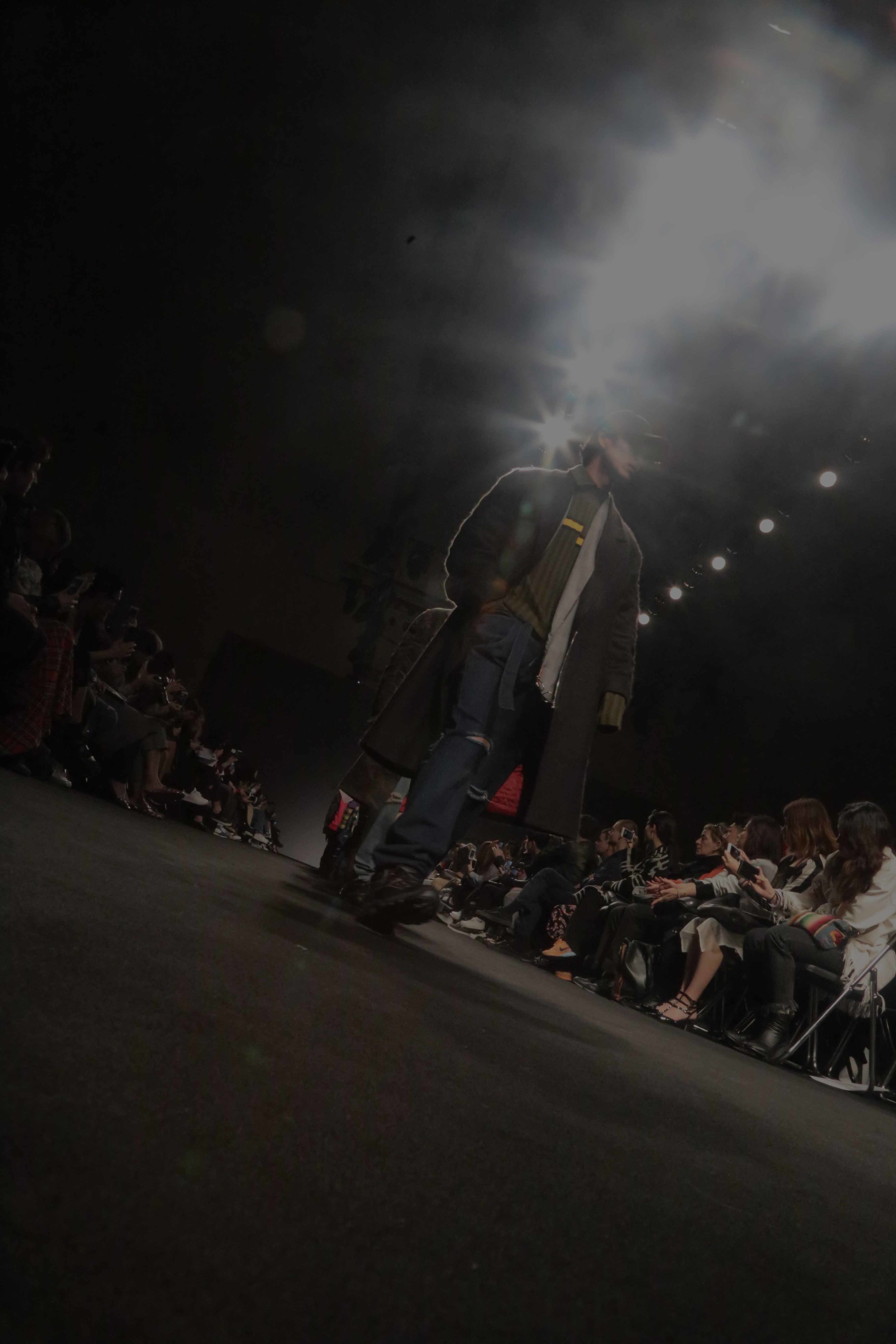
![By Eugene Lim [CC BY 2.0 (http://creativecommons.org/licenses/by/2.0)], via Wikimedia Commons](https://images.squarespace-cdn.com/content/v1/56e92599a3360ca7c0e2b668/1491569695484-GSR49M70QEKK2X4K0GCX/image-asset.jpeg)


































